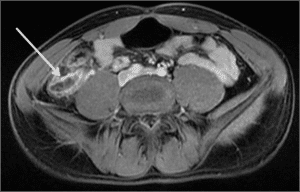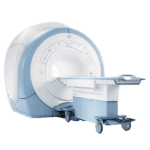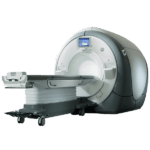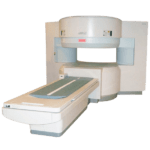Even though MRI doesn’t use contrast, it still offers a highly accurate assessment of appendicitis suspected abdominal pain

Acute appendicitis is inflammation of the appendix, a narrow, finger-shaped organ that branches off the first part of the large intestine on the right side of the abdomen. The appendix has no known function but can become diseased. When a patient is brought into the emergency room with suspected acute appendicitis, doctors usually use ultrasound or CT initially to diagnose the problem and determine if surgery is necessary. However, they usually only chooseMRI scans for pregnant women and children to avoid exposing these more vulnerable patients to radiation and the use of contrast.
Even though MRI doesn’t use contrast, it still offers a highly accurate assessment of appendicitis suspected abdominal pain. The lack of radiation is definitely a bonus.
A study done at the University of Arizona, led by Iva Petkovska, MD, and published in Radiology magazine, showed that unenhanced MRI when verified or refuted by surgical results and clinical follow-up, scored an almost perfect score.
The study involved 403 patients aged 3 to 49 who had come into the emergency room for appendicitis suspected abdominal pain between 2012 and 2014. Of the 403 patients, 67 had MRI imaging findings that were positive for acute appendicitis, while 336 were negative for acute appendicitis and were offered alternate diagnoses.
All of the exams were performed on either a 1.5T or 3.0T scanner and were done quickly, with an average of 14 minutes.
One of the downsides of the study was the authors being restricted to contacting each patient who had negative MRI findings, as well as attending radiologists rarely classifying study results as indeterminate.
Get Started
Request Pricing Today!
We’re here to help! Simply fill out the form to tell us a bit about your project. We’ll contact you to set up a conversation so we can discuss how we can best meet your needs. Thank you for considering us!
Great support & services
Save time and energy
Peace of mind
Risk reduction
The latter result may owe to their practice protocol’s not calling for positive identification of the appendix when there are no inflammatory changes in the right lower quadrant.
“MR imaging without oral and intravenous contrast material may be used with high accuracy as a first-line imaging test in patients younger than 50 years who present to the ED and are suspected of having acute appendicitis,” said Dr. Petkovska. “MR imaging also has the capability to be used to assess secondary causes of abdominal pain and is a viable imaging option to reduce exposure to ionizing radiation.”
As of right now,CT is still the preferred imaging technique for appendicitis-like symptoms, but hopefully, these findings will shine more light on the MRI.



